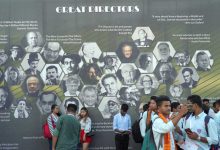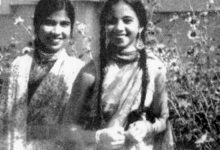Pioneering Scottish documentary filmmaker John Grierson’s principles of documentary were that cinema’s potential for observing life could be exploited in a new art form; that the original actor and original scene are better guides than their fiction counterparts for interpreting the modern world; and that materials “thus taken from the raw” can be more real than the acted article.[1] He states in Cinema Quarterly that the “documentary, or the creative treatment of actuality, is a new art with no such background in the story and the stage as the studio product so glibly possesses.” [2]
Some other scholars of the documentary film address documentary practice in terms of formal codes, categories and conventions, and believe that they are used to create “non-fictional representations of the historical world.” [3]
British documentary film-maker and film historian Paul Rotha believes that “the documentary left the confines of fiction for wider fields of actuality, where the spontaneity of natural behaviour has been recognized as a cinematic quality and sound is used creatively rather than reproductively. This attitude is, of course, the technical basis of the documentary film.” [4]
Theoretically, the notion of documentary filmmaking has received a tremendous transformation with times. Earlier, documentaries were seen as nothing but short newsreels, records of current events, or travelogues; these were considered to be ‘actualities.’ Moving visuals of a train entering a station, and factory workers leaving a plant, are examples of the Lumiere Brothers’ first attempts to shoot the actual event or activities.
Two decades later, Robert Flaherty made the first narrative documentary with an ethnographic look, Nanook of the North (1922), which portrayed the harsh life of Canadian Inuit Eskimos living in the Arctic. Later he made a landmark documentary film Moana(1926) about Samoan Pacific islanders. Grierson in his review of the latter film coined the term “documentary.”
During World War II, documentary films were used as tools to propagate the ideology of the Nazis. One such propagandistic documentary was Triumph of the Will (1935), which records the 1934 Nazi Party Congress in Nuremberg. In response to this film, the US War Department commissioned the Italian-American film director, Frank Capra, to direct documentaries to justify the US involvement in World War II. His Why We Fight (1943) was a series of seven newsreel-style films. The first in the series was Prelude to War, a look at the events from 1931-1939.
Bill Nichols calls the ‘subjects’ in documentary films “social actors.” In the observational, expository or interactive mode as well as in the conventions of documentary television formats that blend these three modes, social actors are mainly presented as objects of observation, subordinate to commentary as examples, informants or witnesses.
“In the works of Rouch, Flaherty and contemporary directors such as Ulrich Seidl, Michael Winterbottom, Abbas Kiarostami, Nicholas Barker or Donigan Cumming, a different idea of being in a film has been employed. The unambiguous claim of an indexical link between image and reality, story and history, the character of the story and the subject of history, does not exist. These films do not submit to an either-or dichotomy. They are fictional as well as documentary, and the social actors are characters as well as agents of history.”[5]
But a recent shift in cultural, technological, stylistic, and social aspect has been discerned in documentary filmmaking.
Indian documentary filmmakers who are a part of this new transformations are keen to use the form as a tool to speak of the unheard stories of the margins, crisis of identity and the lives of the common people. They address issues such as politics, power, race, gender, and the voices of those at the margins otherwise left unanswered.
Supporting Bill Nichols’ arguments that the subjects in documentary films are “social actors”, and also Paul Rotha’s statement that “the documentary left the confines of fiction for wider fields of actuality,” my own perception on the meaning of documentary filmmaking is that documentary films are not the photographic representation of reality but must go beyond the ‘reality’ to find out the ‘truth.’
When I speak of ‘truth,’ I endorse Bertrand Russell’s argument for the correspondence theory of truth — “The truth or falsehood of a belief (proposition, statement) depends on its relationship to something that lies outside the belief (propositions, statements) itself.” I believe that while making a documentary the original actors and the original scenes are better guides to interpret the world and that they must therefore not be recreated to bring in a feel of authenticity. I believe that genuineness is lost by recreating.
Of course, admittedly, at times some amount of recreating becomes necessary. At the time when Flaherty was making his documentary Moana, the Samoans wore modern, Western-style clothing, so he got them to change into traditional tapa cloth costumes to ensure that his documentary might look more authentic.
The focus of my essay is on how Indian documentary filmmakers have taken diverged local subjects and how the former have gone beyond reality in quest of the untold stories of the human world and have addressed these local /marginal issues to represent their universal or global relevance.
I take a look at five documentaries — Anand Patwardhan’s War and Peace (2002), Pankaj Butalia’s An Island of Hope (2010) and Assam: A Landscape of Neglect (2015) as well as two of my own, namely, The Dhemaji Tragedy (2015) and Laxmi Orang: Rising from the Grave — to show how they speak of local issues that carry global significance.
Patwardhan has dealt with the political and social issues in his documentary War and Peace ,but he goes beyond reality to narrate a story of rural people who reside in remote village like Khetolai, the site of nuclear tests. “Villagers of Khetolai in Jaisalmer still believe that radiation of nuclear tests conducted there almost two decades ago still exists in the village and continues to affect them. They say that the cases of cancer, heart, and skin diseases are on the rise, and that milch cattle are unable to produce milk.” [6]
Following the Pokhran-II tests, India became the sixth country to join the nuclear club.[7]Newspapers, television channels and citizens of India hailed the BJP led government for its brave decision. And the then Prime Minister made a speech for the public.
Today, at 15:45 hours, India conducted three underground nuclear tests in the Pokhran range. The tests conducted today were with a fission device, a low yield device and a thermonuclear device. The measured yields are in line with expected values. Measurements have also confirmed that there was no release of radioactivity into the atmosphere. These were contained explosions like the experiment conducted in May 1974. I warmly congratulate the scientists and engineers who have carried out these successful tests. (Atal Bihari Vajpayee) [8]
While the whole country was celebrating, villagers of Khetolai and Pokhran were fighting for their lives due to the dire impact of the Pokhran-II tests. Patwardhan zooms in, and shows the complications that the villagers encountered following these tests. He says in the booklet of the film “From the plight of the residents living near the nuclear test site to the unspeakable effects of uranium mining on local indigenous populations, it becomes clear that contrary to ‘myth’, there is no such thing as the ‘Peaceful Atom.’” This documentary also showcases how the USA with its doctrine of ‘Might is right’ has become the new role model.
His interview of a resident of the village, Bhera Ram Bhismoi, reveals a harsh truth of the so-called ‘success story.’ The villager says that when the firing range was made in 1960s, they protested. When the then Prime Minister Atal Bihari Vajpayee visited the site, the local people of Khetolai held protest marches. “We want permanent hospitals in Khetolai” read one of their banners. They believed that money invested for the test could have been used for the development of the poor.
People of the Pokhran town though have a different narrative. Tribhuvan Purohit, a resident, is proud of the nuclear tests in Pokhran. He believes that Pokhran town was endowed with a global status as a result of the nuclear tests. Another resident says that the claim of the villagers that they are affected by the nuclear test is in fact ‘a lie’. He also says that some died but not because of the nuclear tests.
Patwardhan also refers the names of other such testing sites. At the Lop Nur site in Xinjiang, where almost 40 nuclear explosions had been carried out between 1964 and 1996, residents believe that they have been badly affected by radioactive fallout. His documentary is a scathing attack on those who claim to bring peace through war.
Pankaj Butaliya has taken the identity crisis of the indigenous people and their constant struggle for their identity as the themes in his documentaries An Island of Hope and Assam: A Landscape of Neglect. He poses the question “Who is indigenous and who is the ‘outsider’ on this earth?”
Dislocation of people is a universal phenomenon. In the opening of the documentary, Butaliya mentions that forty years after they were expelled from their land, a group of young ‘Chakmas’ started ‘Sneha’ School in Changland in an attempt to pick up the pieces of their lives once again.” This documentary raises numerous pertinent questions. History says that they were forced to migrate from Bangladesh to Arunachal Pradesh: “In 1964, communal violence and the construction of the Kaptai hydroelectric dam displaced nearly 1,00,000 Chakmas from their traditional homelands.” [9] The government offered them valid migration certificates, but still they constantly faced severe social discrimination.
In 1994, an anti-Chakma wave popped up in Arunachal and resulted in them being harassed. In Diyun, a rural area, a secondary school constructed by the Chakma community that was built on a self-help basis was burnt down. The doors of the schools in Arunachal Pradesh was closed for the Chakma communities for four years to come. At such a critical juncture, the Sneha school was started by Sushant Chakma, whose parents too migrated from Bangladesh. [10]
In the documentary, Butalia interviews Arindam Chakua, the Sneha School Headmaster. The latter feels that even after living as refugees for almost fifty years they have achieved nothing. But through the school they can see the hope coming alive once again.
In Assam: A Landscape of Neglect, Butalia’s states that there are two dominant narratives that characterize Assam — one is a deep sense of resentment at being neglected, and the other is a fear of engulfment. Raising the question on the identity crisis, namely, ‘Who is indigenous and who is the outsider,’ he states that the British took large tracts of lands to establish tea- plantation and brought labourers from all over the country. These labourers have been working since the British rule, but today none knows who is the outsider, and it appears that all are outsiders.
The filmmaker interviews Hridayananda Agarwala, one of the legends of Assamese culture, who actually belongs to a Marwary family and whose forefather migrated from Rajasthan two hundred years ago. Agarwala’s entire family has completely assimilated to the Assamese culture. Agarwala says, “People tend to ask where a person comes from rather than what he does. This is the habit of nature.”
Butalia then refers to the immigrant Muslims of the Char Chapori residing by the Brahmaputra River and its tributaries in Assam. These immigrants are fighting against numerous problems such as soil erosion, over flooding, illiteracy, and a high population growth. Historically speaking, a huge number of Muslim origin was brought in from East Pakistan as labourers and later, after the Independence of India, Hindu Bengali refugees from East Pakistan came into Assam and its neighboring states. Furthermore, during the Bangladesh Liberation War, thousands of refugees came to North-East India. All those who came in search of a living are termed as ‘outsiders.’
The filmmaker visits a place called Tengagiri ‘Char’, which used to be a village till a few decades ago, when the Brahmaputra river caused its erosion and turned it into a ‘land of sand’ (char). Hamid says in the documentary, “In 1983, when the island crumbled, we moved out of here. But again this village was formed back in 1996 and that’s when we moved back here. We struggled to survive. Once the erosion happens, we have to leave. This shifting from one char to another has now become our cycle of life.”
Butalia next refers to the Karbis, one of the major ethnic tribes living in the hill areas of Assam. The threat that the indigenous people of Assam are facing on the question of identity is summed up by Elwin Teron, a Karbi man.
The Assamese indigenous community wanted to preserve their identity. The indigenous people of Assam thought that liberation is necessary and so supported the All Assam Students Union. But when the Assam Accord was signed, there was nothing in favour of the tribal people. People of hills and plains have conflicts of interest — socially, politically and economically. This is the reason why Assam has so many changes. There is something in the minds of the indigenous people that is the silent resentment. (Elwin Teron)
In two of my own documentaries, The Dhemaji Tragedy and Laxmi Orang: Rising from the Grave, I have made an attempt to go beyond the ‘reality’ to understand the feelings and emotions of the victims of two different circumstances.
In The Dhemaji Tragedy, I have depicted how the bomb blast in Dhemaji, a small district of Assam, left millions of people in India, particularly in Assam, shocked. On August 15, 2004, people of Dhemaji, mostly school children aged between 12 and 14, and their mothers, gathered at Dhemaji College Ground for the Independence Day parade. At around 8:45 am, a powerful bomb that was planted near the college gate, and triggered by a remote-controlled device, went off, killing 10 school children and 3 elders, and injuring many.
This tragedy was one of the darkest chapters in the history of Assam. As time passed by, this horrible, tragic incident became a story of the past. The distressed parents of the victims, however, are not yet ready to forget the explosion and forgive those who were responsible for it. I wanted to go beyond the actuality to understand their responses to that tragedy through my documentary.
In my second documentary, Laxmi Orang: Rising from the Grave, I have again foregrounded the unrealized aspect of the victim. On Nov 24, 2007, Laxmi Orang, an Adivasi girl of Japowari Orang Basti, Sonitpur district, Assam, joined in a protest rally organized by the All Adivasi Students’ Association of Assam to demand Schedule Tribe Status. She was stripped by some miscreants. Devastated, she ran naked, desperately seeking help in the midst of all the bedlam. This brutal, inhuman act came to be known as ‘the Beltola Incident.’ It is imprinted in the history of Assam as the darkest day.
This documentary focusses on how she survived after such an incident. Since the moment of the incident, I had been following her to know how society and her family reacted to the incident. I found that she fought back with her strong willpower, determination and unyielding spirit to serve her community. She has resurrected herself as a strong voice emerging from the voiceless women. She has now become an influential leader, a selfless social worker and a carrier of Adivasi culture and tradition.
I believe that only documentary films, and not fiction films, can go beyond reality to find out what is the truth. Shyam Benegal says that “the sense of reality comes only when you can actually smell the soil.” I too believe that the more local it is, the more universal it is. The local has to be the true, the real.
References:
[1] “COGN21 Theory Review”. pages.ucsd.edu
[2] Grierson, J. (1933), ‘The Documentary Producer,’ Cinema Quarterly, 2:1, pp. 7–9.
[3] Representing Reality: Issues and Concepts in Documentary, Bill Nichols, Indiana University Press, 1991.
[4] Rotha, Paul. Documentary Film: The Use of the Film Medium to Interpret Creatively and in Social Terms the Life of the People as It Exists in Reality (London, 1935), p. 79.
[5] “Reality Replayed”. widerscreen.fi.
[6] May 11, TNN /; 2017; Ist, 08:55. “Khetolai still bears the scars of nuke test | Jaipur News – Times of India”. The Times of India.
[7] “BBC News | India nuclear testing | Third World joins the nuclear club”. news.bbc.co.uk
[8] “Nuclear Testing – India, May 1998”. seismo.berkeley.edu
[9] “Students’ Movements in Arunachal Pradesh and the Chakma-Hajong Refugee Problem”. Economic and Political Weekly: 7–8. 2015-06-05.
[10] Ibid





